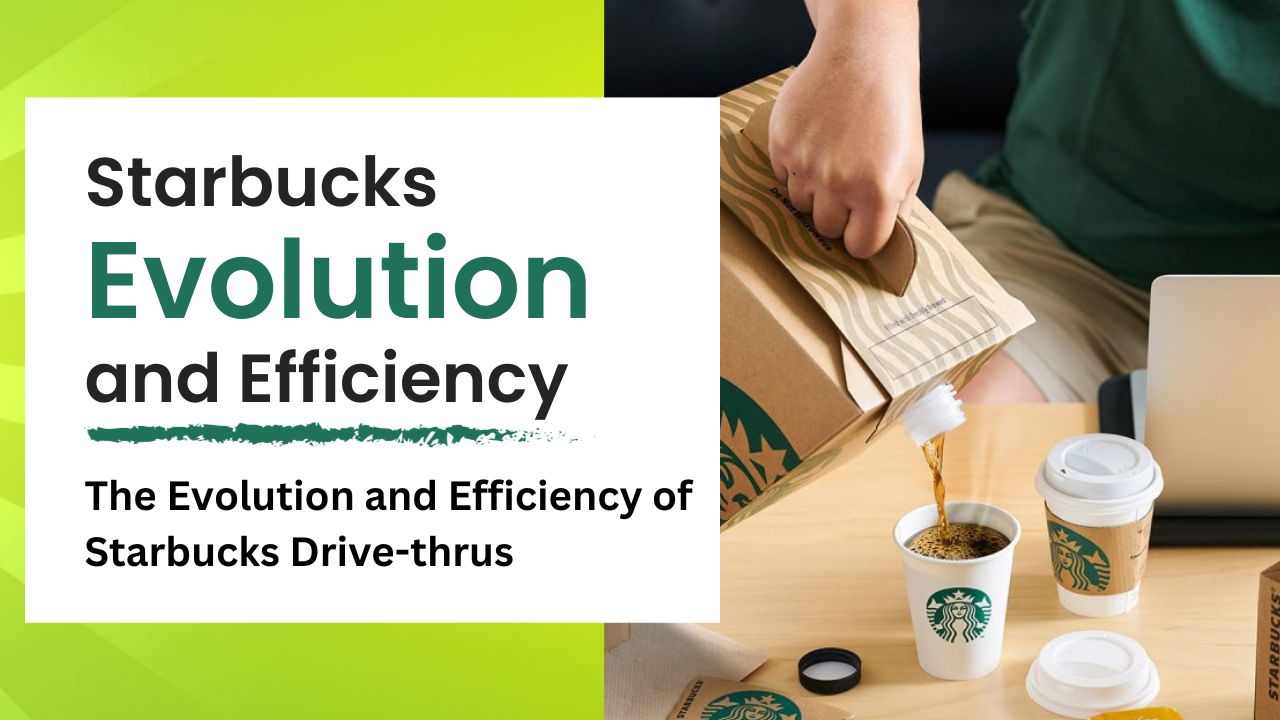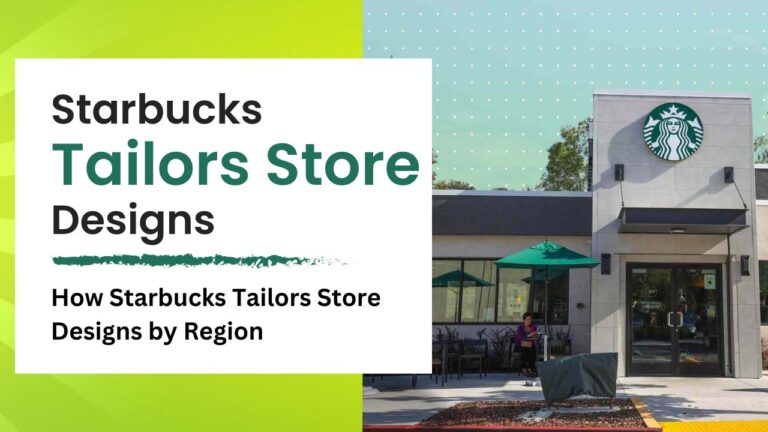The Evolution and Efficiency of Starbucks Drive-thrus

The evolution of Starbucks Drive-Thrus marks a significant chapter in the company’s history, reflecting a shift towards convenience and efficiency in the fast-paced modern world. These drive-thrus cater to customers seeking quality coffee without the wait of a traditional cafe. Incorporating Starbucks partner hours ensures a seamless experience for both customers and employees. As a response to changing consumer habits and the increasing demand for quick service, Starbucks’ drive-thrus has become a symbol of the brand’s adaptability and commitment to customer satisfaction. This introduction explores the rise of drive-thru culture and Starbucks’ strategic entry into this market.
The Rise of Drive-Thru Culture
Drive-thru culture has become a staple of modern life, offering convenience and speed in our fast-paced society. It began as a simple solution for busy lifestyles and has since evolved into an expected service for many businesses. The drive-thru model caters to those who value time efficiency and seek to avoid the queues of indoor dining. With My partner hours incorporated into their operations, businesses like Starbucks balance employee welfare with consumer demands.
Starbucks’ Initial Foray into Drive-Thrus
Starbucks’ initial venture into drive-thru services marked a significant strategic shift for the brand. Recognizing the growing demand for convenience, Starbucks adapted its business model to include drive-thru services in select locations. This move allowed the company to reach a broader customer base, including those who might not have the time to visit a traditional store. Implementing features like Starbucks gift card balance checks at drive-thru windows further enhances the customer experience, making it more convenient and efficient.
Historical Development of Starbucks Drive-Thrus
Starbucks’ journey into drive-thru services marks an important evolution in the brand’s history. This development was not just a response to changing consumer habits, but a strategic move to enhance accessibility and convenience. The drive-thru model, initially a novel concept for Starbucks, has grown to become a significant aspect of their business model. It reflects the brand’s adaptability and commitment to meeting customer needs in a fast-paced world. This historical development is a testament to Starbucks’ innovative approach and its dedication to customer service.
Early Adoption and Implementation
The First Starbucks Drive-Thru
Starbucks opened its first drive-thru in the late 1990s, adapting to the growing demand for convenience. This pilot project marked a significant shift in Starbucks’ traditional café model. The initial drive-thru aimed to offer the same high-quality coffee and customer service as found in Starbucks stores, but with the added convenience of not leaving the car.
Customer Reception and Early Challenges
The first Starbucks drive-thru was met with enthusiasm from customers seeking convenience. However, it also faced challenges such as maintaining the speed of service and ensuring product consistency. Starbucks had to quickly adapt its operations and training to ensure these drive-thrus lived up to the brand’s reputation for quality and customer service.
Expansion and Growth
Nationwide and Global Expansion
Encouraged by the success of its initial drive-thrus, Starbucks embarked on a significant expansion of this model. The company rapidly introduced drive-thrus across the United States, recognizing their appeal to a broad range of customers. This expansion wasn’t confined to the U.S. alone; Starbucks also started integrating drive-thrus in its international expansion strategy, catering to global consumer preferences for convenience.
Adapting to Different Markets
As Starbucks expanded its drive-thru operations globally, it faced the challenge of adapting to various market conditions and preferences. The company had to tailor its drive-thru model to suit different cultural and consumer norms. This included customizing the menu, service style, and even the design of the drive-thrus to resonate with local customers while maintaining the Starbucks brand experience.
Technological Integration in Drive-Thrus
The incorporation of technology in drive-thru operations has revolutionized the fast-food industry. This integration has not only enhanced customer experiences but also streamlined operational efficiency. By adopting cutting-edge technologies, drive-thrus have become more than just a convenience; they are a showcase of modern, efficient service. Technologies like advanced ordering systems and mobile apps have made ordering faster and more personalized, while back-end improvements in inventory management and service speed have significantly boosted operational effectiveness.
Enhancing Customer Experience through Technology
Ordering Systems
- Touchscreen ordering kiosks provide a user-friendly interface for customers.
- Voice recognition software for accurate and efficient order-taking.
- Integration with digital menu boards for real-time menu updates and promotions.
- Automated upselling features to suggest additional items based on customer choices.
- Seamless integration with payment systems for quick and secure transactions.
Mobile App and Pre-Ordering
- Mobile apps allow customers to place orders ahead of their visit.
- GPS integration to prepare orders as customers approach the drive-thru.
- Personalized recommendations based on previous orders and preferences.
- Loyalty program integration for redeeming rewards and special offers.
- Contactless payment options for added convenience and safety.
Streamlining Operations with Technology
Inventory Management
- Automated inventory tracking systems for real-time stock monitoring.
- Predictive analytics for efficient stock replenishment and waste reduction.
- Integration with supply chain management for timely deliveries.
- Real-time data analysis to predict peak times and prepare accordingly.
- Cloud-based solutions for centralized access and management across multiple locations.
Speed of Service Improvements
- Automated order and payment processing to reduce wait times.
- Real-time performance metrics to identify and address bottlenecks.
- Scheduling software for optimal staff allocation during peak hours.
- Use of machine learning to predict customer flow and prepare in advance.
- Continuous software updates and training to ensure smooth operation.
The use of technology in drive-thrus represents a significant leap forward in the quest for efficiency and customer satisfaction. These advancements not only improve the customer experience but also enhance the overall operational performance of drive-thrus.
Sustainability and Environmental Considerations
Sustainability and environmental considerations have become increasingly important for businesses globally. The focus on eco-friendly operations and waste reduction is not just a trend but a necessity in today’s world. Companies are integrating sustainable practices into their business models, recognizing the long-term benefits for the environment and their operations. The drive towards sustainability includes implementing green technologies and engaging in community-centric environmental initiatives. This focus reflects a growing awareness of the impact businesses have on the planet and the responsibility they bear.
Addressing Environmental Concerns
Eco-Friendly Designs
Eco-friendly designs in business operations are now more prevalent than ever. These designs focus on reducing the environmental impact of business activities. They include the use of sustainable materials, energy-efficient systems, and construction methods that minimize ecological damage.
Waste Management and Reduction
Effective waste management and reduction are critical components of sustainable business practices. Businesses are adopting strategies to reduce waste generation and improve recycling processes. This approach not only helps in conserving resources but also reduces the overall environmental footprint of the business.
Future Sustainability Initiatives
Green Technologies
The adoption of green technologies is pivotal in driving future sustainability initiatives. These technologies aim to reduce environmental harm while maintaining operational efficiency. They include renewable energy sources, sustainable manufacturing processes, and eco-friendly transportation methods.
Community Impact and Initiatives
Businesses are increasingly recognizing the importance of their impact on local communities. They are engaging in initiatives that promote environmental awareness and sustainability within the community. These efforts often involve partnerships with local organizations, educational programs, and community-based environmental projects.
Impact of Drive-Thrus on Business Efficiency
Drive-thrus have significantly impacted the efficiency and profitability of businesses, especially in the fast-food industry. By offering a convenient option for customers, drive-thrus has increased sales and enhanced customer satisfaction. They cater to the fast-paced lifestyle of modern consumers, leading to higher transaction volumes and improved customer retention. Drive-thrus have also allowed businesses to optimize their operations and service delivery, proving to be a valuable asset in the competitive market. Overall, the introduction of drive-thrus has been a game-changer, contributing to business growth and customer loyalty.
Increased Sales and Revenue
Drive-Thru vs. In-Store Sales
- Drive-thrus often account for a substantial portion of a business’s total sales.
- They typically have higher transaction volumes compared to in-store sales.
- Drive-thrus can serve more customers per hour, leading to increased revenue.
- The convenience of drive-thrus attracts customers who might otherwise not visit.
Impact on Peak Hours
- Drive-thrus effectively handle the increased customer flow during peak hours.
- They provide an alternative to customers who are deterred by in-store crowds.
- Peak-hour sales in drive-thrus contribute significantly to daily revenue.
- Efficient service in drive-thrus during busy times enhances overall business throughput.
Customer Retention and Satisfaction
Convenience and Time-Saving
- Drive-thrus offer a quick and convenient option for customers on the go.
- They reduce the time customers spend waiting for their orders.
- The speed and convenience of drive-thrus appeal to time-sensitive consumers.
- This convenience factor plays a crucial role in customer retention.
Personalized Customer Experience
- Many drive-thrus now offer personalized experiences through technology.
- Mobile apps and loyalty programs allow for customized orders and rewards.
- Personalized greetings and remembering regular customers’ preferences enhance satisfaction.
- This personalized approach fosters a stronger connection with customers, encouraging repeat visits.
Future Trends and Expansion of Drive-Thrus
The future of drive-thrus promises significant growth and innovation, adapting to the evolving needs of consumers and technological advancements. This growth will be characterized by an increased focus on digital integration and understanding changing consumer habits. Additionally, global expansion will play a crucial role, requiring businesses to adapt to new markets and cultural preferences. The drive-thru model, already a symbol of convenience, is poised to become even more integral to the fast-paced lifestyle of consumers worldwide.
Anticipating Future Consumer Needs
Expanding Digital Integration
The future of drive-thrus will see a greater emphasis on digital integration. This will include advanced ordering systems, increased use of mobile apps, and integration with various digital payment methods. The aim is to make the drive-thru experience as seamless and efficient as possible.
Evolving Consumer Habits
Understanding and adapting to evolving consumer habits is key to the future success of drive-thrus. This includes catering to preferences for healthier options, faster service, and more personalized experiences. The drive-thru model will need to evolve continuously to meet these changing demands.
Global Expansion and Adaptation
Entering New Markets
The global expansion of drive-thrus presents enormous potential. This expansion will involve entering new markets and adapting the drive-thru model to suit different geographic and demographic needs. It’s an opportunity to tap into new customer bases and drive growth.
Cultural Adaptations
Adapting to different cultural preferences is crucial for successful global expansion. This means customizing menus, service styles, and marketing strategies to resonate with local tastes and preferences. Understanding and respecting cultural nuances will be key to the global success of drive-thrus.
Conclusion
In summary, the evolution and efficiency of Starbucks’ drive-thrus reflect a significant adaptation to modern consumer needs and technological advancements. This transition marks a strategic move by Starbucks to enhance convenience, speed, and customer satisfaction, leveraging digital integration and innovative service models. As Starbucks continues to expand globally, adapting to cultural differences and evolving consumer habits, the drive-thru model remains a key aspect of its business strategy, symbolizing its commitment to meeting customer expectations in a fast-paced world.






